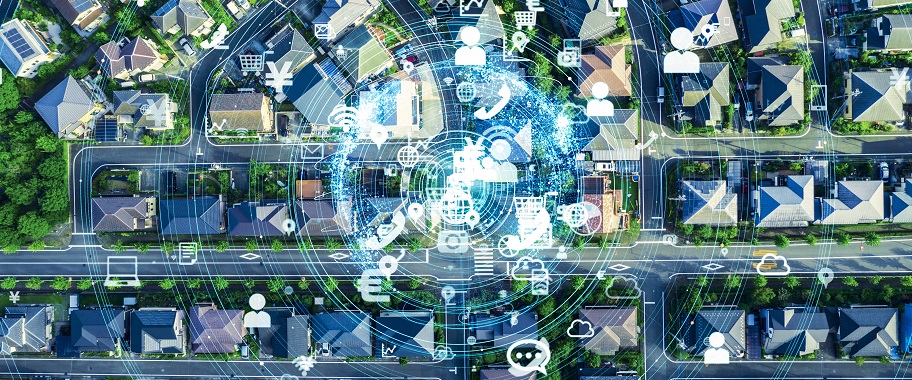By Rebecca Ford, EnergyREV Research Director, University of Strathclyde, Glasgow
Countries around the world are embarking on energy transitions to decarbonise their economies. Decentralised and digitised solutions are becoming an increasingly prevalent part of the landscape. But what these smart local energy systems will look like, and the ways in which they will deliver benefits is unclear. Making sure we understand the process by which system and societal benefits can be delivered is key to make sure the full value of smart local energy systems can be unlocked.
Following an extensive review of the literature and interviews with thirteen researchers working in the sector, one thing is clear: there is no single definition of a smart local energy system, nor the benefits it should deliver (read the full paper here). But the work did reveal 5 key insights.
1) There are some non-negotiable benefits
There are certain benefits, like reducing greenhouse gas emissions and increasing energy equity and affordability, that should be an integral and central aim of all smart local energy projects. However, other direct benefits (e.g. increasing local self-sufficiency and reducing reliance on national infrastructure) and co-benefits (e.g. strengthening local decision making, engaging community actors, and creating local jobs) may have differing degrees of focus for different localities in which smart local energy systems are being delivered. Our work highlighted some of these “have to have” and “nice to have” benefits, but more work with the wider sector is now underway to develop a structure and set of criteria for evaluating smart local energy system success (have your say here).
2) The right set of stakeholders must be engaged
Given that the objectives, or goals, of smart local energy system projects are typically defined by those involved in developing and delivering the project, there is the potential for misaligned objectives if the right set of stakeholders are not engaged from the outset. Understanding which stakeholders need to be involved is critical given the interdependence of local and national systems, the reliance of many solutions on existing network infrastructure and regulation, increasing demands on local governance processed, and ever engaged communities and citizens. If their voices are perspectives are not represented, there could be significant impacts on the legitimacy of smart local energy system projects, and on the outcomes ultimately achieved.
3) Understanding boundaries is not easy
Local energy system projects can vary wildly in scale, from single building systems to anything below the level of national energy infrastructure. And drawing the boundary around the system can be done in a number of ways, including (1) on a map (e.g. according to local authority or parish boundaries), (2) around generation resources, (3) according to network infrastructure, and (3) leveraging social identity. These boundaries provide different ways of thinking about what (and who) is or isn’t part of a smart local energy system, which can be useful under different circumstances. But regardless of how boundaries are drawn, understanding the interaction between what’s inside and outside of the boundary is key when exploring benefits and unintended consequences of both local and national energy systems.
4) There are many ways to be “local” and “smart”
Localness can be understood in part by the boundaries drawn around the system, but other ways that energy systems can be made local include: (1) engaging community and other local actors, (2) supporting local decision making processes, and (3) enabling local ownership of energy assets to drive value back into the locality.
Smartness is typically layered into energy systems by collecting and using more and different forms of data in new ways. This could support autonomous management of the system, or it may be coupled with data or boundary conditions input by users, applying machine learning and artificial intelligence techniques to improve performance. It could also be used to improve evidence-based decision making for end users (e.g. providing more useful information to help them make more informed decisions about how they use energy), planning, or governance processes.
Importantly, these “smart” and “local” elements must be interconnected in such a way that allows the smart local energy system to deliver on its goals and leverage multiple benefits. Using causal models and theory of change approaches can help articulate and make explicit the interdependencies and interactions between elements that will ultimately drive – or inhibit – success.
5) Generate evidence and be agile
The final, and critical, aspect relates to the learning emerging from the smart local energy system demonstration. Building a body of evidence to support the scale up of successful solutions, drive policy development, and identify and overcome barriers, is not easy. Current evaluation approaches often fail to provide sufficient evidence around the broad range of benefits (and unintended consequences) that smart local energy systems can deliver both within and outside of the system boundary. Creating an agile approach for evaluating not just what works, but how, for whom, and in what context, is critical for delivering learnings about how success is driven and providing insights to identify pathways for replicating or scaling successful solutions.
A framework for understanding smart local energy systems
To create a systematic way for thinking through these five key issues, we have developed a smart local energy system framework. This provides a structure within which smart local energy system stakeholders can explore how their projects might deliver value and in what context. It can help develop a collective and shared understanding of how smart local energy systems can leverage both “smart” and “local” elements, within a system boundary, to deliver additional value and co-benefits to that locality. It also aims to make explicit the potential unintended consequences that may be realised, as well as the impact on the wider system and the interactions that may be present with other technical, social, environmental, financial, and regulatory systems. For more information about the development of the framework, implications, and next steps, read our white paper here.
